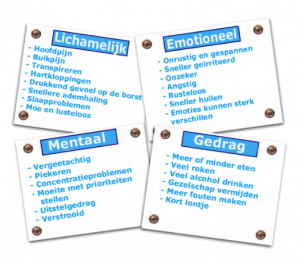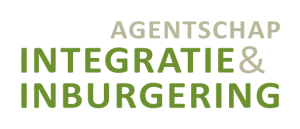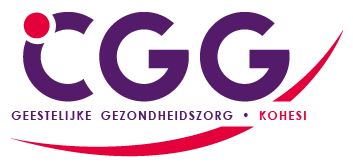COACH
Tips
Tips
Preparation for employment
People with a migration background have often had to endure a lot in order to get here. The training course 'Building a CV narrative with the Olympic tool' will provide you with exercises that allow you to bring (survival) skills to the surface.
Do not assume too quickly that someone with a migration background is not ready for work. Work can sometimes bring extra pressure, but it can also provide structure, distraction and lead to integration!
Support services are often absent in the home country. As a result, the job seeker may not know or use enough services and tools to solve peripheral conditions (use of public transport, housing, psychological vulnerability, childcare, legal help, etc.). Provide info, refer or accompany your clients, teach them about apps and practice together (e.g. bus/train schedules).
- Use the sociale kaart or establish een eigen sociale kaart including regional services and welfare and health organizations in order to make appropriate referrals.
- Engage the Agentschap Integratie en Inburgering in legal questions regarding the job seeker's residence and/or employment status.
- Is the job seeker involved in an integration program at the Agentschap Integratie en Inburgering? His counsellor also helps to solve pre-conditions. Refer the jobseeker or engage the counselor.
- Any questions about diversity and non-discrimination? Unia can inform and guide you on what is and is not legal.
Often jobseekers with a migration background have a small (or no) network. Support them in expanding their network through the social map, neighbors, volunteer work, a mentor or buddy, ... Encourage them to take the initiative to speak to others, and help them cross the threshold of language and culture.
As a result, you may see more needs than during a conversation. For example, observe how the household is organized, what about childcare, whether there is support from the partner and what the living conditions are like. These can all be starting points for further conversations.
In our culture, for example, taking initiative, stating one's own opinion and setting boundaries are valued. In other cultures however, respect for hierarchy, not contradicting others and loyalty are paramount. Saying 'no' or taking initiative is therefore not always obvious!
- Use alternative games (Rafa rafa, intercultural games, cultural calling cards, and out of the box,...) to discuss cultural differences. They are available at de Aanstokerij or on loan at the educatief centrum.
- Inform the job seeker about the mindset and attitudes on the Flemish job market. Check to what extent he can cope with or adapt to a different mentality, or enter into an appropriate dialogue about it.
- Also, encourage the job seeker to observe and discuss cultural differences. "What do others do?", "What's strange to you?" Recommend doing this later in the workplace with a job coach, mentor, confidant or supervisor.
In some cultures, certain customs are linked to social status. For example, bicycles or mopeds are sometimes "not done" because they are for "poor people". Pay attention to these cultural differences. Discuss the job seeker's perception, then inform him about the general perception in Belgium (for example: cycling is healthy and environmentally friendly).
They often indicate a cultural difference or a psychosocial need. Have a conversation about this and address what the job seeker may need to deal with it.
Your coaching focuses on finding a suitable job for the job seeker with a migrant background. You can use a whole series of exercises for this, including those from the Olympic tool.
Body awareness exercises have a major impact on how well a job seeker feels: they increase self-esteem and self-confidence and strengthen social skills, among other things. In Flanders we are not so familiar yet with these kinds of exercises and tools. In Finland they are. Get inspired by the Somebody tool.
Do you recognize one or more of the characteristics below in the job seeker? Talk about it and ask how he is coping. Refer to professional help if he has no coping strategy and the stress has been present for a long time.

Does the job seeker experience negative thoughts? This brochure lessens the threshold to start the conversation. The brochure is available in 7 languages via this link.
This way you avoid yes/no answers. For example, don't ask "Can you be at work at 7 a.m.?" but rather "At what time can you be at work at the earliest? Check if the answer is suitable for a specific job opening. Also indicate why an early start time is important for a particular job. If an early start hour is not possible in this example, expand to other vacancies and/or job targets.
The ESF project Nimap developed an English-language toolkit with tips to support them in their job search and integration in the workplace.
He does not have to start from scratch: he has skills and knowledge, acquired in other contexts. Focus on strengths from his whole life, on initiatives he took in his personal life, his approach to situations, his personality, ... With this mindset you will broaden his self-perception and increase his self-confidence.
If there is no adequate match with a position in terms of hard skills, provide a growth path through vocational training.
Think of skills and attitudes, but also about wellbeing in the workplace and integration into the team. Does he feel easily attacked? Does he have a fear of loud noises? Is culture/belief a holdover? Does he have habits that do not fit in, such as attaching less importance to being on time, .... What does he need to deal with this? What can an employer do to help? Formulate realistic expectations for the conversation with the employer.
Discuss what growth trajectory is appropriate and focus on the importance of networking and language acquisition in the workplace. It is often difficult to recruit skilled newcomers at their level.
In order to do this, go through this easily accessible digital tooltogether with the job seeker that starts from the strengths of the person, his relationships and environment.
Do this before the employment starts. Look together for alternatives to obstacles, for example: "What if I have a flat bicycle tire?", "What if my child is sick?", "What if I am ill?", etc. Always ask yourself what the job seeker can do himself to solve something. This is how you make him self-reliant. Be patient and give practice opportunities in language, taking initiative and problem-solving skills.
Check the ERK-bergmodel and the communicatiewaaier of the Agentschap voor Integratie en Inburgering. They reflect what someone with a certain language level knows and how to communicate appropriately. Need more tools? Follow the training 'doeltreffend communiceren’.
Focus in coaching on identifying skills present, positive personality traits, commitment and willingness!
For instance let him use deepl translate during coaching and check whether or not he understood everything correctly. Make this a habit so that he will later use it in the workplace.
This allows him to practice Dutch or work on certain prerequisites. Some examples:
- Uitsprekend app, developed by VDAB.
- classy.be: vocabulary for bakery, wholesale kitchen, store assistants, painting, logistics
- NT2: get to know professions through photos
- oefenhierjenederlands.be: with a convenient booklet pictogrammenboekje over werk
- openschool.be: modules for language, math, driver's license (MO) & computer
- wablieft.be: current affairs in clear language, so you can participate in discussions on the work floor.
Refer him to the Agentschap Integratie & Inburgering, where he can get more information on the course that best matches his abilities and expectations. Also here you can find more opportunities to learn and practice Dutch.
Matching job seeker and employer
Employers prefer one confidant who knows their company. They expect concise information from this person, applied to their specific business situation. Your role is to facilitate this info.
Is the employer open to diversity, or is there a need for a readinessproces on diversity? Can the prospective employee engage in open dialogue, or should they rather adapt to the prevailing customs and norms? It could be useful to try deze quickscan van Nimap, which situates organizations in one of the four stages of interculturalism, or use this checklist checklist as a source of inspiration.
Often it is about language, safety, communication, cultural differences and integration into the team. Next question may help you: 'Where do you expect to have to invest additional time or resources when employing an employee with a migration background?'
- Show the employer that you understand his concerns, don't attempt to convince him.
- Pass along the message: problems that are anticipated will not always be present. And when they do show up, there's an answer to this.
- Then explain in concrete terms how you or a partner tackles that situation.
- Indicate what services or approaches can assist the employer in this regard.
- Via this praatplaat kan je de meerwaarde van inclusief werken bij een werkgever bespreekbaar maken.
Focus on work situations and communicate appreciatively in relation to needs in the workplace. Talk about the job seeker in terms of 'he functions well when...' and not in terms of 'he cannot ...'. Make sure you formulate realistic expectations.
Also, make the distinction between you, as a coach, and the employer very clear to the job seeker. Explain clearly to him that private topics should not be discussed during job interviews.
There are services that support employers in achieving well-being and integration in the workplace, both before and after recruitment. You will find them here. Introduce these services (or your own) to the employer. Check in advance who you can work with in your area.
For example, don't assume that an HR person makes all the decisions regarding recruitment. Often, managers determine the choice of new employees, and so the HR employee will have to convince them first. Suggest to have the conversation together or ask what he needs to further discuss this internally.
Don't simply invest in countering resistance from the employer and limit your focus to the match in terms of soft skills. Always combine this with a checklist of hard skills considered necessary by the employer .
The potential candidate does not have to start from scratch: he has skills and knowledge from other contexts. Focus on his skills and experiences , strengths developed during his life, on realizations and initiatives from his private life, his approach to situations, his personality, .... .
You should focus on committed employers who do not expect 'White Ravens', but employees with growth potential who, in terms of hard skills, largely match the profile sought. Also check whether the foreseen learning time matches the expected growth and the growth rate. It is essential in a growth or learning path that one is allowed to make 'mistakes', as long as there is visible progress.
Base this assessment on multiple sources:
- Talk to HR or managers: What do they expect in terms of hard and soft skills. What should the new employee know and be able to do (at the start?) What can he learn along the way?
- Talk to employees: What makes it interesting to work at the company and do this job? What is running smoothly and what is more challenging in the job?
- Observe interactions, practices, and manners in the workplace.
A growth process is a shared process. Make clear upfront agreements so that both employer and candidate employee know where they stand. For example, discuss:
- growth points: language, specific hard or soft skills, attitudes, integration into the team.
- responsibilities: What does the employer, the leadership and the team contribute in order to ensure the growth trajectory of the employee with a migrant background is successful? Consider practical issues (time, information, resources, learning opportunities, learning styles,...) but also interpersonal issues (understanding, communication, feedback, acceptance,...)
Discuss this with both employer and candidate employee. Hear what both parties need, answer concerns and provide appropriate services.
- Get to know services that support employers in terms of hard & soft skills on and off the work floor. Integrate services from partner organizations into the growth trajectory, if you don't offer them yourself. Check who you can work with in your region.
- Think of training and learning opportunities, coaching, tips and tools for employer and employee. For example article 60, IBOT, BIO, and career exploratory internships.
- Explore which sector or training fund the employer has access to and include their training offerings and grant opportunities.
- An employer often wants to know what services may cost and what the conditions are. Find out this on a made-to-measure basis and check what subsidies and compensations are available.
Does the employer have doubts about the candidate's skills, attitude,…? Suggest a trial day so that the job seeker can prove himself in that area. Agree in advance what the employer wants to see on that trial day or internship and estimate the feasibility.
Don't just talk about the candidate-employee's motivation. Also explain what your commitment is to the growth trajectory and what employer and employee can rely on you for.
The goal of an employer is to run his business. Present the employment of people with a background in maigration as one of the elements that can contribute to the success of the company. It is not just about giving opportunities or a social duty, but an actual WIN-WIN.
- Do not speak of 'prejudices' or 'resistance', but of 'concerns' or 'challenges'.
- Do not speak of "psychosocial risks" or "trauma," but of "well-being in the workplace".
- Do not speak of "survival skills" or "21st century skills" but of "soft & hard skills" or "competencies," according to what the employer uses.
Working with non-native speakers is no loss of productivity, but an investment with benefits for the entire company. Existing work tools and practices become more accessible to all employees. The clearer, the fewer errors on the work floor and the more potential in recruitment ( short schooled), young people, inexperienced profiles, ...).
Inform employers of financial incentives (Art.60, IBO-T, BIO, VOP) and free support (job and language coaching, mentoring programs, etc.) that will offset the investment.
Employers often see non-native speakers as a safety risk and a source of miscommunication. Reach out with creative, customized solutions such as (safety) pictograms, videos that show work instructions, tag along days with someone with a common language, ... Are you unable to offer this yourself? Discover services that support employers on and off the work floor. Check who you can work with in your area.
In this checklist you can find useful tips. Get your own inspiration from language profiles or tips about clear vacancies or get your employer started with examples. A language profile provides an overview of the linguistic competencies that someone needs to perform a job in terms of speaking, listening, writing and reading.
Here you will find tips and tools on how to create easily accessible vacancies and on the selection process for candidates with a migration background. these tips you can also give to the employer.
An employer values solution-oriented communication. He prefers someone who can think along, be to the point and act with discretion. Keep in mind that this is evident in your language.
Coaching in the workplace
Prepare the welcoming together (with management and team), announce support and training on diversity in the workplace. Ask, for example, how the welcome will take place, what information (work rules, working hours, leave arrangements, etc.) the employee will receive and how the induction will proceed. Think about everything that affects the proper functioning in the work place such as language, culture, attitudes, practical questions about the work, administration,... . Your role is to continue to align the needs of employee and employer!
Introduce yourself or the coach as a point of contact to the employee and colleagues in case of questions or problems. Quick intervention in the event of miscommunication or lack of clarity, taking over administrative tasks, etc. relieves the employer or management and reassures the employee.
Consult these tips and welcome checklist and find out how to create a welcome brochure. Suggest the implementation of a mentorship system to the employer and provide the mentor with this checklist .
Explain to management and colleagues that open communication, without value judgments, about differences in habits creates understanding and clarity about each other's expectations. Also repetition, giving examples, demonstrating tasks and involving the new employee during informal moments, asking his opinion,... makes him feel welcome.
Think of questions about contracts, health insurance funds, unions, legal regulations, but also housing, transportation, driver's license, child care,... . Workers from migration backgrounds often do not come from a service culture and go to the manager with these questions. Prevent this by providing your own support, referrals, or a engaging a job and language coach in the workplace. This saves the employer time, removes concerns from the employee and prevents absenteeism.
Employees with a migration background sometimes behave differently than we are used to in the Flemish work environment. Encourage management, colleagues and employee to discuss the behavior and the underlying mindset. In this way you can come to an understanding, tools and agreements on how to address these issues.
For example, does the employee originate from a culture where you only follow instructions from your superiors and is he less trained in taking initiative? Then make it clear to him that a Flemish employer values initiative and input. Draw up a to-do list together including tasks that he can do when his work is done, make him agree that he will ask colleagues where he can still be of help, or who he can talk to for additional tasks, etc.
Unexpected reactions to everyday situations can stem from cultural differences. Communicate this to each so that they do not assume ill intent. Trust and good communication are crucial. A practical example:
A foreman sees an employee with a migration background brushing the floor with one hand and gives the tip to do it with two hands. In response, the worker takes a second brush and sweeps with two brushes at the same time. The employee did not know the use of a brush. Only after showing and trying brushing with just one brush and both hands did the employee notice the difference.
As a coach, you mediate when necessary.
Changes can only be made when everyone knows and agrees. This creates trust and confidence in reliability. Discuss this with the employee. A practical example:
A employee in the service voucher industry works from 9 am to 12 pm. The employee starts later, but also ends work later because he is reasoning as follows, "If a customer is not home then it does not matter at what time I start and end work, as long as I have completed everything." The employer thinks, "If something were to occur outside of work hours, he is not insured. And if he doesn't honor this agreement, what other arrangements?" The customer thinks, "If he doesn't show up on time, what other commitments does he not keep? Is he even reliable?"
Do colleagues or the new employee find it difficult to address each other or give feedback? Build in a set time to discuss this or centralize this task with an appropriate mentor, godmother or godfather.
The characteristics below can occur during stress. Do you recognize one or more signs in employee. Talk about it and ask how he deals with it. Refer to professional help if he has no coping strategy and the stress has been present for a long time.

Do this by applying the eight keys from the diversity compass and by facilitating a good work environment together with management or the employer. Does the employer benefit from an overall team process? Then introduce the offer of the diversity academy or the Agentschap Integratie en Inburgering. Find more tips on explaining corporate culture, culture-specific and personal questions, and dealing with resistance here.
Ensure communication flow, align needs, organize adjustments, and thus make growth visible. Focus on soft skills and attitudes. For professional knowledge and hard skills, engage employees in the company or trainers.
The employer, management and colleagues, HR, clients,.... Each have their own interests and expectations towards the new employee and the coach! Work with all partners in the growth process. Also consider (internal) trainers, mentors and supervisors of workplace forms, ... Carefully determine who is monitoring which skills, what the progress is and when any adjustments are needed.
Be sure to do this during the start-up period. Discuss deviating hours with your own organization. Job coaching in the workplace is not a nine-to-five job. Be accessible (by phone or Whatsapp) to both employee and employer, especially in crisis situations. This creates trust with all parties.
You will catch more and will be able to respond more quickly. The employee is more likely to come to you with questions, you remain in contact with the employer and stay informed about what is going on. Who knows, after a while a question may arise for which other services become relevant.
Want to provide practical tips to employers on how to approach the workplace? Check out the services for employers.
Employers often see language as the primary cause of misunderstandings in the workplace. Yet the language level is usually not the issue, but rather the lack of communication. A language coach can provide support.
- Discuss in advance with the employer on what topics and at what times the flow of information is important. Do not only think about tasks, but also about company culture, formal and informal rules.
- Participate in the reception day. This way you can check afterwards whether all relevant info was correctly understood by the employee.
For example, discuss working hours, sick days, safety rules, tasks, etc. Ask him what he has remembered. At the start, go over the welcome brochure one more time with the employee. Check whether he has understood everything. Give managers and colleagues the tip to have the employee repeat agreements to check that he has understood them.
Dialects are difficult for any outsider to understand, non-native speaker or not. Here are some language tips, examples of do's and dont's, a poster containing tips for the workplace and a inspiration list of easy replacement words.
Accessible language in work procedures, work orders,... is easier for everyone to understand, non-native speakers or not. Here you will find language tips, examples of do's and dont's, a poster containing tips for the workplace and a inspiration list of easy replacement words. A language coach or any of the following organizations can provide support to the employer.
Do this, for example, through pictograms, videos about tasks or procedures with simple explanations, examples, demonstrations, etc. Introduce a language coach or support the employer in this regard. Tips can be found on the website of diversiteitspraktijk and klaretaal.
Discuss this with management and include practice opportunities in the growth plan. Engage colleagues as well and educate them on how they can contribute. More tips on learning and practicing Dutch on and off the job can be found here. Also consider per each situation whether speaking only Dutch in the workplace is the most effective: a few tips.





